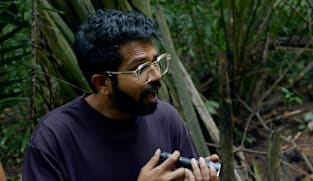Adjournment motion on using common spaces in residential estates to build social cohesion
Barricades at the void deck, a football hard court closed to the public - could these be the “missed opportunity” to achieve collective compromise in common spaces? This is one area we can choose to do better in, said NMP Syed Harun Alhabsyi. In his adjournment motion in Parliament on Tuesday (Jan 9), he said such common spaces in residential estates equalise access, cut across all layers of society and bring people together. Interactions are dynamic, spontaneous, genuine, “rooted in the everyday” and the mix is never constant. And this “makes it beautiful for social cohesion”, he said. Dr Syed Harun said such “organic” ties will form the basis of how society will overcome adversity and respond to crisis. He said it is not easy when steps are taken to close common areas from fair and legitimate interests like sports. “To close, to barricade, to block common spaces appear to suggest that there can be no room for compromise and that the redacted behaviour or activities are so abhorrent that there is no place for it at all,” he said. It becomes a “paradox” because these are the same activities that engender connectedness in the community, he said. Dr Syed Harun said it takes good urban design, sound social policy and the interplay of the two to make things work. “So with forward planning, a little bit of creativity, some contemplation and a considered compromise, common spaces in residential estates can be realised as the focal point for community relations and a beacon for social cohesion,” he said. Responding, Minister of State for National Development Muhammad Faishal Ibrahim said the Government pays close attention to upstream plans to create opportunities for Singaporeans to interact with one another regularly through a range of common spaces in the residential estates and heartlands, as well as commercial and mixed-use developments. It also actively encourages the integration of community and sports uses within commercial and mixed-use developments. Dr Faishal said HDB plays a pivotal role in providing a liveable environment for Singaporeans to live, work and play together. It is designing a roadmap in the planning and use of common spaces to help Singaporeans “live well, live green and live connected to each other”. These include community rooms, pavilions, fitness corners, three-generation playgrounds, neighbourhood parks and town plazas. Dr Faishal stressed the importance of activities and programmes that bring residents together and encourage spontaneous interactions in fostering social cohesion. He said a key principle in managing common spaces is that they should be kept open and inclusive. He said the Government will continue to design, build and maintain conducive common spaces and work with the community to provide meaningful programmes to promote social cohesion and integration.
Barricades at the void deck, a football hard court closed to the public - could these be the “missed opportunity” to achieve collective compromise in common spaces? This is one area we can choose to do better in, said NMP Syed Harun Alhabsyi. In his adjournment motion in Parliament on Tuesday (Jan 9), he said such common spaces in residential estates equalise access, cut across all layers of society and bring people together. Interactions are dynamic, spontaneous, genuine, “rooted in the everyday” and the mix is never constant. And this “makes it beautiful for social cohesion”, he said. Dr Syed Harun said such “organic” ties will form the basis of how society will overcome adversity and respond to crisis. He said it is not easy when steps are taken to close common areas from fair and legitimate interests like sports. “To close, to barricade, to block common spaces appear to suggest that there can be no room for compromise and that the redacted behaviour or activities are so abhorrent that there is no place for it at all,” he said. It becomes a “paradox” because these are the same activities that engender connectedness in the community, he said. Dr Syed Harun said it takes good urban design, sound social policy and the interplay of the two to make things work. “So with forward planning, a little bit of creativity, some contemplation and a considered compromise, common spaces in residential estates can be realised as the focal point for community relations and a beacon for social cohesion,” he said. Responding, Minister of State for National Development Muhammad Faishal Ibrahim said the Government pays close attention to upstream plans to create opportunities for Singaporeans to interact with one another regularly through a range of common spaces in the residential estates and heartlands, as well as commercial and mixed-use developments. It also actively encourages the integration of community and sports uses within commercial and mixed-use developments. Dr Faishal said HDB plays a pivotal role in providing a liveable environment for Singaporeans to live, work and play together. It is designing a roadmap in the planning and use of common spaces to help Singaporeans “live well, live green and live connected to each other”. These include community rooms, pavilions, fitness corners, three-generation playgrounds, neighbourhood parks and town plazas. Dr Faishal stressed the importance of activities and programmes that bring residents together and encourage spontaneous interactions in fostering social cohesion. He said a key principle in managing common spaces is that they should be kept open and inclusive. He said the Government will continue to design, build and maintain conducive common spaces and work with the community to provide meaningful programmes to promote social cohesion and integration.



















